BMW unveils shape-shifting concept car with computers that can predict your every move
German manufacturer BMW Group is celebrating its centenary year by unveiling a series of future-looking concept vehicles, the first of which is a shape-shifting autonomous car with artificial intelligence.
The BMW Vision Next 100 is an attempt by the manufacturer to predict what cars will look like in the not-too-distant future when driverless vehicles are commonplace and artificial intelligence can learn and then predict a passenger's behaviour.
"If, as a designer, you are able to imagine something, there's a good chance it could one day become reality," said BMW's design chief Adrian van Hooydonk. "So our objective with the BMW Vision Next 100 was to develop a future scenario that people would engage with."
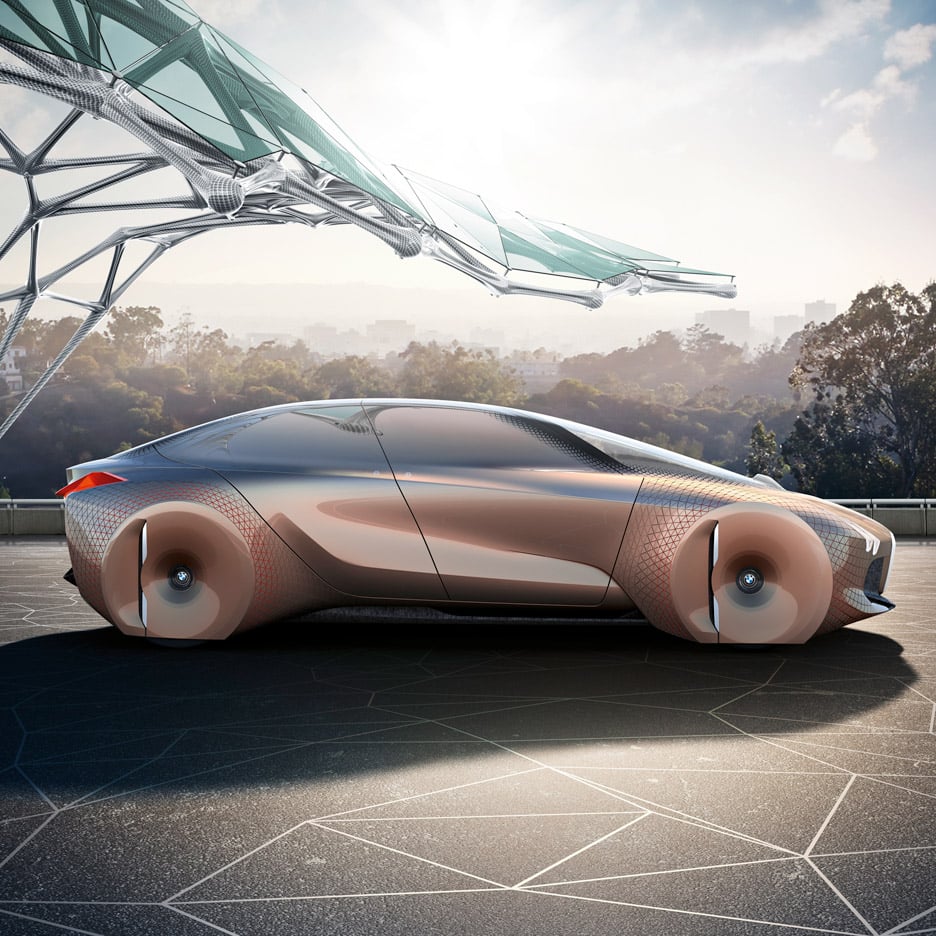
The concept vehicle features 800 moving triangles, which are set into the instrument panel and fitted to the side panels on the outside.
The shape-shifting triangles – a feature BMW is calling Alive Geometry – would move to allow the car to communicate with the rider. For example, they could open up to reveal red undersides when hazards present themselves on the road.
"They [the triangles] involve the driver in a form of preconscious communication, where an intuitive signal predicts an imminent real-time event," explained BMW in a statement released today.
"Although at present it remains difficult to imagine how hundreds of tiny triangles could be coordinated to make Alive Geometry work, in the years ahead it will be possible, as today's standard vehicle manufacturing methods are replaced."
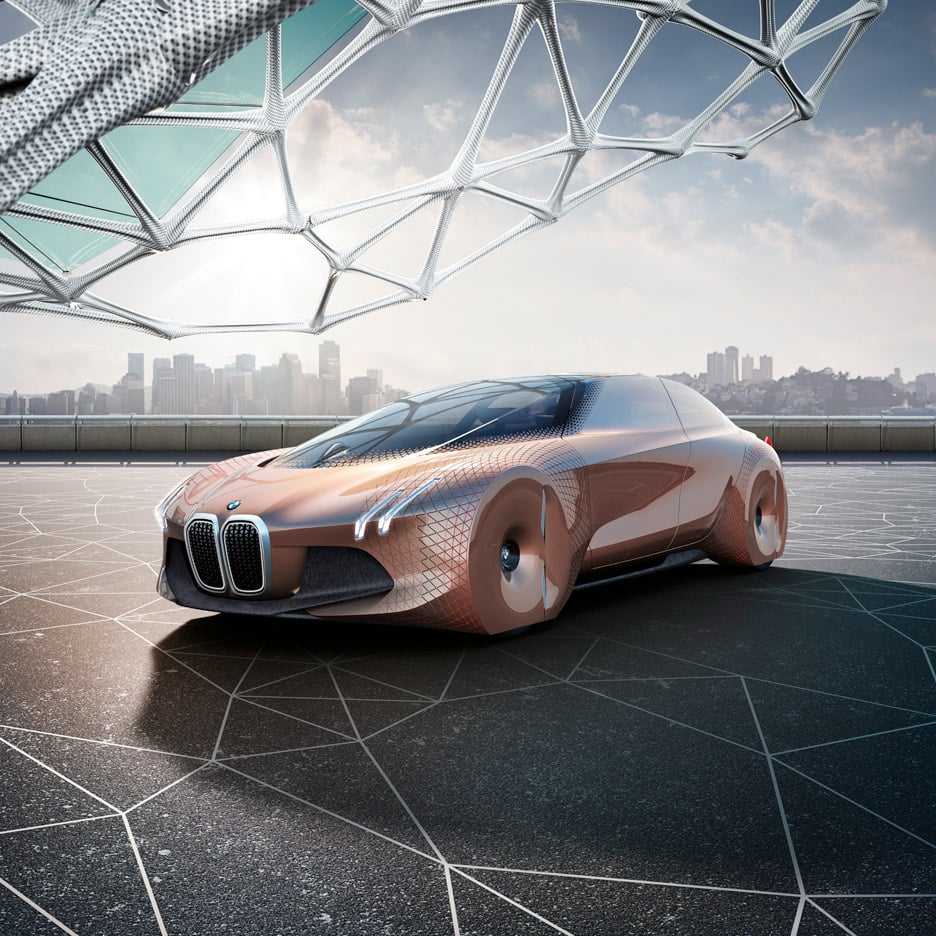
BMW believes humans will still want to drive in the future, despite also using driverless technologies. The BMW Vision Next 100 would therefore offer users two modes called Boost and Ease.
In Boost mode the driver would be in control of the vehicle. When selected, the seat and steering wheel would change position to give the driver a safer view out of the car while the central console would slide across to make it easier for various settings to be selected via gesture control.
The entire windscreen would act as a display, projecting the ideal driving line, speed and other information.
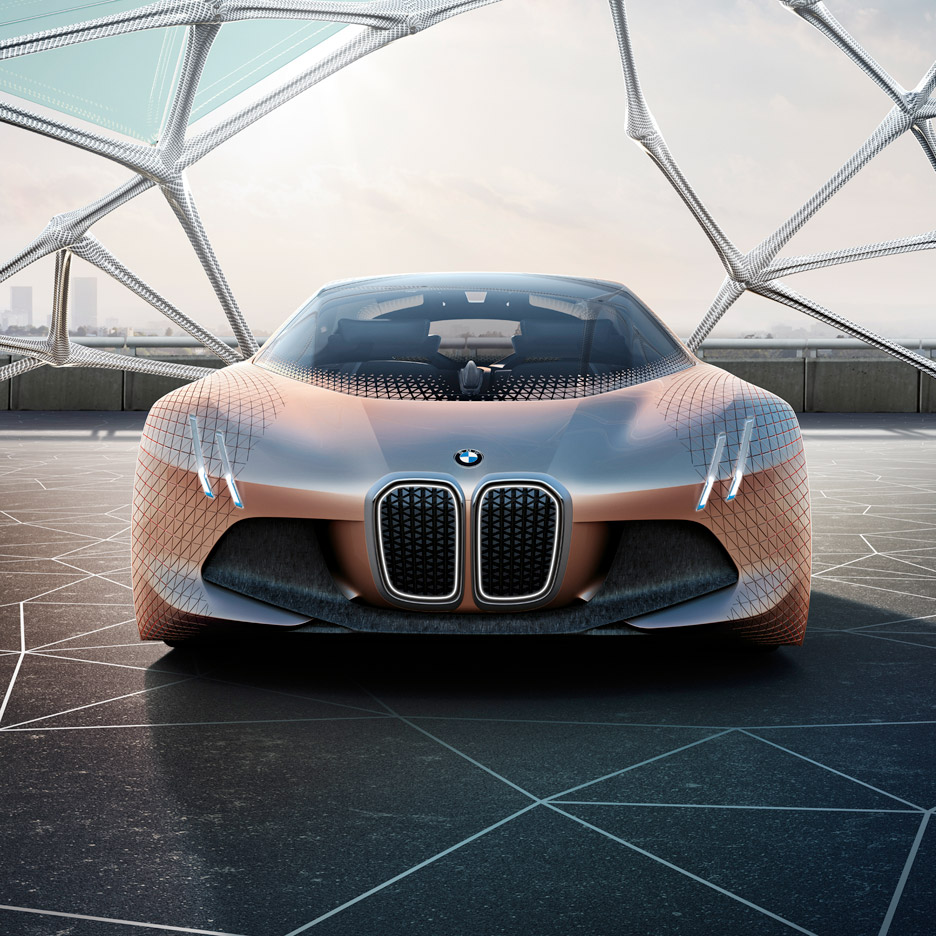
"Rather than making the driver drive faster, this kind of support sets out to make them drive noticeably better," said BMW. "In foggy conditions, for example, this means the driver can benefit from information such as vehicles crossing ahead, before they actually come into sight."
In Ease mode the car would retract its steering wheel and centre console. Headrests would also move to one side allowing the driver to recline.
The windscreen's Head-Up Display would then offer passengers the opportunity to browse the internet, watch movies or post to their social media channels.
"Depending on the driving mode, the focus of the vehicle changes, concentrating on essentials for the driver in Boost mode, and the surroundings and atmosphere in Ease mode, highlighting the impressive landscapes or buildings of interest that the car is passing by, for instance," continued BMW.
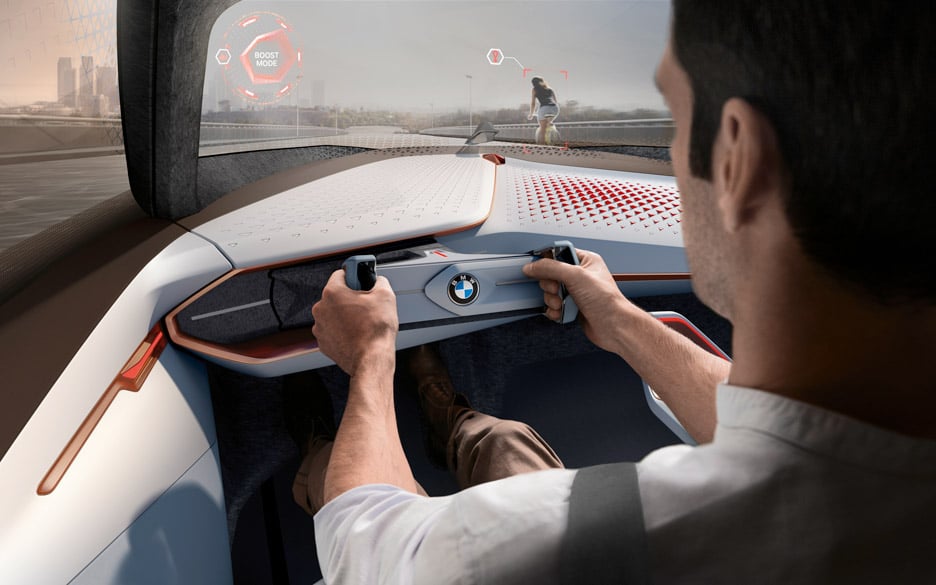
Lights positioned at the vehicle's front and rear could change colour depending on which mode the driver has selected, acting as a warning to other road users and pedestrians.
BMW has also imagined a digital companion for the driver, which interprets collected data on the owner's mobility habits and learns from it.
Positioned in the centre of the dashboard, the Companion – a large gemstone-shaped component – will know enough about the driver after a few journeys to "automatically perform routine tasks."
BMW has built of model of the car to show how it might look in reality. The exterior of the vehicle is copper coloured and features large wheels positioned at the outer edges of the body. Sensors detect the owner's approach and automatically open the wing doors.
The designers used carbon fibre to form the side panels and fabrics made from recycled or renewable materials for the interior furnishings.
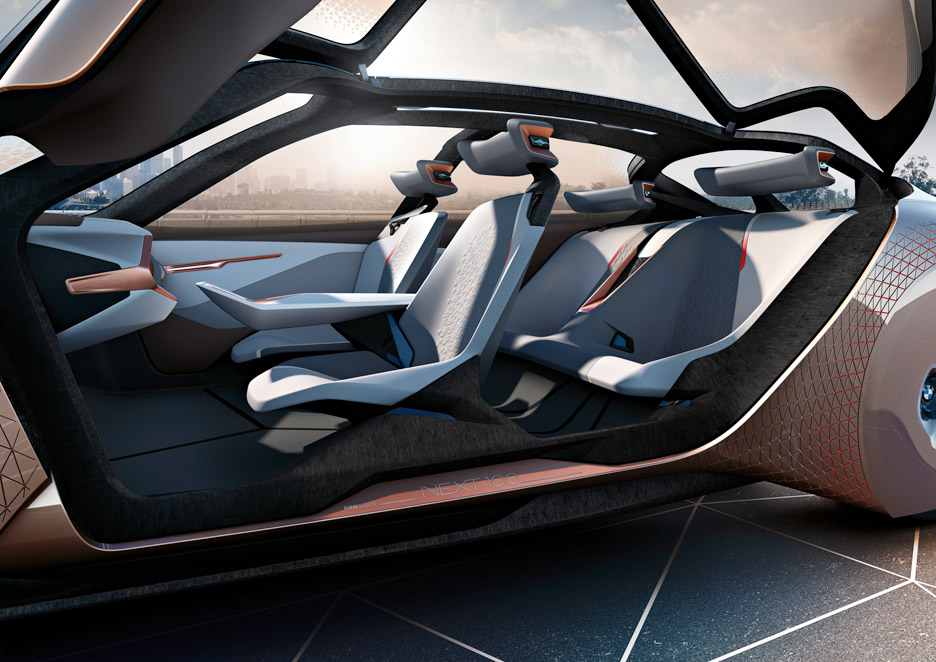
"In the future, the choice of materials will become even more important throughout the design and production process," explained BMW. "With time, other new materials will also be added into the mix, allowing different vehicle shapes to emerge."
"To save resources and support more sustainable manufacturing, less use will be made of wood and leather while innovative materials and the consequent new possibilities in design and production gradually come to the fore."
BMW Group is celebrating its centenary year by embarking on a world tour, where the company will unveil its vision for the future of MINI, Rolls Royce and BMW Motorrad – all brands owned by the German manufacturer.
In an interview with Dezeen last year BMW's Benoit Jacob – designer of the brand's i8 sports car – explained how hybrid and electric technologies are changing the way vehicles are designed after decades of stagnation.
The German manufacturer also unveiled its concept vehicle equipped with an augmented reality display.